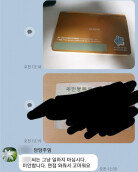Designs encompassing the world
The sign of barbershop pole is simple but intense. The column of red, white, and blue stripes is universal. It is identical in the opera The Barber of Seville with the background of Spain in the 18th century and even at barbershops in New York and Seoul. In the Middle Age, barbers were surgeons in the Western world. A razor was used not only to shave beards but also to cut legs. The sign of barbershop pole retains the traces of the past even after barbers are separated from surgeons. Red represents an artery, blue a vein, and white bandage.
Flushing toilets are similar in most countries. The first flushing toilet was developed by Joseph Bramah in 1775 in England. Although it had no lid, it was not much different from todays flushing toilets. A flushing toilet became popular in the middle class in 1851 when it was exhibited in the Great Exhibition in the Crystal Palace in London. A little later, a ceramic flushing toilet was introduced. French-American artist Marcel Duchamp first displayed a white toilet as an artwork with the title Fountain. It was the beginning of ready-made art.
This year marks the 100th anniversary of the Coca Cola bottle. The beautiful design as well as the secretive recipe are the secret behind the brands development into the symbol of American culture. As many copycats were made, Coca Cola created a Coca Cola contour bottle to distinguish itself from its competitors. The bottle once appeared on the cover of the Time magazine, which was rare in that an object, not people, was often on the cover, and also inspired pop art icon Andy Warhol to use it as his subject.
Apple came up with the prototype of smartphones, and latecomers were sued for allegedly copying Apples iPhones. Design is not just appearance but the efficient expression of functions. In particular, IT devices are so mixed that functions and appearance can hardly be separated. When technology and culture are advanced, design can develop. Korea should be able to create a design that can be a global standard at a time of the Internet of Things (IoT), robots, and drones.
pisong@donga.com







